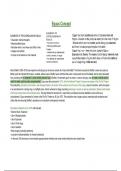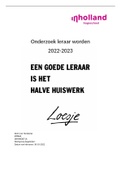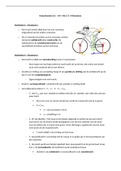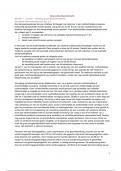Equus Concept
ELEMENTS OF PSYCHOREALISM IN EQUUS:
• Characters’ internal thoughts
• Memories/flash-backs
• Narrative which is non-linear and shifts in time
• Images and symbols
• A focus on the rational vs. the irrational
Peter Shaffer (1926–2016) was inspired to write Equus by the chance remark of a friend at the BBC. The friend recounted to Shaffer a news story about a
British youth who blinded 26 horses in a stable, without cause. Shaffer never confirmed the event or discovered more of the details, but the story fascinated
him, provoking him ‘to interpret it in some entirely personal way’ (Shaffer). His dramatic goal, he wrote in a note to the play, was ‘to create a mental world in
which the deed could be made comprehensible.’ Equus was first produced in 1973, while the National Theatre Company was based at the Old Vic Theatre.
The production, directed by John Dexter, was intensely theatrical. A section of the audience sat at the rear of the stage, close to the action, which took place
in an area likened to a boxing ring or a bullfight arena. Actors remained on stage, becoming witnesses to events as well as participants. Stylised metal masks
and hooves turned actors into terrifying horses. The play follows the structure of a ‘case history’ and Equus has been labelled by some critics as a
‘psychodrama’. Equus premiered in London at the Old Vic Theatre on 26 July 1973. The production was a huge success, impressing both audiences and
critics alike and securing Shaffer’s reputation as an important contemporary dramatist.
Psychiatric treatments in the 1970s still included:
• Electric Shock Treatment
• Use of Straight-jackets
• Use of hypnosis
• Use of Truth drugs
• Use of sedation
• Brain surgery (including lobotomy)
• Long-term institutionalisation (in mental institutions)
• In the early 70s there was a move towards opposing these methods and many mental institutions were closed down
,SCENE AS A DIRECTOR AS A PERFORMER VISUAL ELEMENTS LINKS TO OPC CONTEXT
ACT 1, SC -highlights Dysart’s -Dysart is frantic and paces -Dysart’s office. White clinical -proscenium arch -time of austerity - little
1 internal turmoil back and forth -3 sided totem column with white book The set design is colour
-speak out stage -intonation and moments of minimal and Psychiatric treatments
directions to set stillness abstract and in the 1970s still
scene in minimalist -tense gait therefore open included:
set -droopy eyelids enough to reflects • Electric Shock
-sweaty palms many of the key Treatment
-stands in centre stage to themes of Equus • Use of
begin, ¼ right, slowly turns to The Greek gods Straight-jackets
audience are referenced in • Use of hypnosis
the six metre high • Use of Truth drugs
corrugated iron • Use of sedation
walls that • Brain surgery
shelves, window outline
encircle the stage (including lobotomy)
-bright single spotlight follows on black
and dwarf the • Long-term
stage
actors (the institutionalisation (in
-glass perspex acrylic sheet lifts when
mortals) and mental institutions)
Hesther enter- expressionism style
combined with the • In the early 70s there
concrete stage was a move towards
floor the set also opposing these
resembles a methods and many
Greek temple and mental institutions were
even a ritualistic closed down.
altar.
The chorus of
horses enters the
space through the
back wall, which
-cast all sat on hay bales separates and
opens up (like a
stable door) whilst
shafts of light
, come through it.
The height of
these walls and
the light coming
through them
emphasise the
god-like
quality of the
horses in Alan’s
mind.
The floor is
concrete. The
sterile quality of
the design reflects
the regimentation
of Dysart’s mind –
the very lack of
passion and
spontaneity that
he so envies in
Alan – and it also
serves to suggest
an asylum, a
padded cell, the
stables, a cinema
(retro art deco)
and even a
slaughterhouse.
ELEMENTS OF PSYCHOREALISM IN EQUUS:
• Characters’ internal thoughts
• Memories/flash-backs
• Narrative which is non-linear and shifts in time
• Images and symbols
• A focus on the rational vs. the irrational
Peter Shaffer (1926–2016) was inspired to write Equus by the chance remark of a friend at the BBC. The friend recounted to Shaffer a news story about a
British youth who blinded 26 horses in a stable, without cause. Shaffer never confirmed the event or discovered more of the details, but the story fascinated
him, provoking him ‘to interpret it in some entirely personal way’ (Shaffer). His dramatic goal, he wrote in a note to the play, was ‘to create a mental world in
which the deed could be made comprehensible.’ Equus was first produced in 1973, while the National Theatre Company was based at the Old Vic Theatre.
The production, directed by John Dexter, was intensely theatrical. A section of the audience sat at the rear of the stage, close to the action, which took place
in an area likened to a boxing ring or a bullfight arena. Actors remained on stage, becoming witnesses to events as well as participants. Stylised metal masks
and hooves turned actors into terrifying horses. The play follows the structure of a ‘case history’ and Equus has been labelled by some critics as a
‘psychodrama’. Equus premiered in London at the Old Vic Theatre on 26 July 1973. The production was a huge success, impressing both audiences and
critics alike and securing Shaffer’s reputation as an important contemporary dramatist.
Psychiatric treatments in the 1970s still included:
• Electric Shock Treatment
• Use of Straight-jackets
• Use of hypnosis
• Use of Truth drugs
• Use of sedation
• Brain surgery (including lobotomy)
• Long-term institutionalisation (in mental institutions)
• In the early 70s there was a move towards opposing these methods and many mental institutions were closed down
,SCENE AS A DIRECTOR AS A PERFORMER VISUAL ELEMENTS LINKS TO OPC CONTEXT
ACT 1, SC -highlights Dysart’s -Dysart is frantic and paces -Dysart’s office. White clinical -proscenium arch -time of austerity - little
1 internal turmoil back and forth -3 sided totem column with white book The set design is colour
-speak out stage -intonation and moments of minimal and Psychiatric treatments
directions to set stillness abstract and in the 1970s still
scene in minimalist -tense gait therefore open included:
set -droopy eyelids enough to reflects • Electric Shock
-sweaty palms many of the key Treatment
-stands in centre stage to themes of Equus • Use of
begin, ¼ right, slowly turns to The Greek gods Straight-jackets
audience are referenced in • Use of hypnosis
the six metre high • Use of Truth drugs
corrugated iron • Use of sedation
walls that • Brain surgery
shelves, window outline
encircle the stage (including lobotomy)
-bright single spotlight follows on black
and dwarf the • Long-term
stage
actors (the institutionalisation (in
-glass perspex acrylic sheet lifts when
mortals) and mental institutions)
Hesther enter- expressionism style
combined with the • In the early 70s there
concrete stage was a move towards
floor the set also opposing these
resembles a methods and many
Greek temple and mental institutions were
even a ritualistic closed down.
altar.
The chorus of
horses enters the
space through the
back wall, which
-cast all sat on hay bales separates and
opens up (like a
stable door) whilst
shafts of light
, come through it.
The height of
these walls and
the light coming
through them
emphasise the
god-like
quality of the
horses in Alan’s
mind.
The floor is
concrete. The
sterile quality of
the design reflects
the regimentation
of Dysart’s mind –
the very lack of
passion and
spontaneity that
he so envies in
Alan – and it also
serves to suggest
an asylum, a
padded cell, the
stables, a cinema
(retro art deco)
and even a
slaughterhouse.





